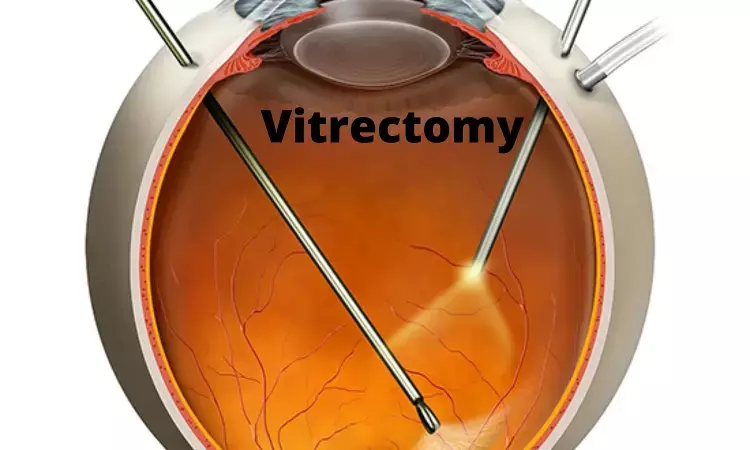- Home
- Medical news & Guidelines
- Anesthesiology
- Cardiology and CTVS
- Critical Care
- Dentistry
- Dermatology
- Diabetes and Endocrinology
- ENT
- Gastroenterology
- Medicine
- Nephrology
- Neurology
- Obstretics-Gynaecology
- Oncology
- Ophthalmology
- Orthopaedics
- Pediatrics-Neonatology
- Psychiatry
- Pulmonology
- Radiology
- Surgery
- Urology
- Laboratory Medicine
- Diet
- Nursing
- Paramedical
- Physiotherapy
- Health news
- Fact Check
- Bone Health Fact Check
- Brain Health Fact Check
- Cancer Related Fact Check
- Child Care Fact Check
- Dental and oral health fact check
- Diabetes and metabolic health fact check
- Diet and Nutrition Fact Check
- Eye and ENT Care Fact Check
- Fitness fact check
- Gut health fact check
- Heart health fact check
- Kidney health fact check
- Medical education fact check
- Men's health fact check
- Respiratory fact check
- Skin and hair care fact check
- Vaccine and Immunization fact check
- Women's health fact check
- AYUSH
- State News
- Andaman and Nicobar Islands
- Andhra Pradesh
- Arunachal Pradesh
- Assam
- Bihar
- Chandigarh
- Chattisgarh
- Dadra and Nagar Haveli
- Daman and Diu
- Delhi
- Goa
- Gujarat
- Haryana
- Himachal Pradesh
- Jammu & Kashmir
- Jharkhand
- Karnataka
- Kerala
- Ladakh
- Lakshadweep
- Madhya Pradesh
- Maharashtra
- Manipur
- Meghalaya
- Mizoram
- Nagaland
- Odisha
- Puducherry
- Punjab
- Rajasthan
- Sikkim
- Tamil Nadu
- Telangana
- Tripura
- Uttar Pradesh
- Uttrakhand
- West Bengal
- Medical Education
- Industry
Vitreous opacity vitrectomy safe and effective for removal of "Floaters": Study

USA: Vitreous opacity vitrectomy (VOV) techniques can potentially reduce risk to the minimal in elective vitrectomy performed for any indication, states an article published in Clinical Ophthalmology. All eyes treated with VOV, achieved continuously clear vision and no eye developed clinically significant complications, during the 1-year follow-up.
Cataracts, a Lens opacity developing in the aging eye is reported as the leading cause of blindness and the second cause of moderate and severe vision impairment globally. The "vitreous" gel, present behind the lens also develops opacities that seem to "float" (floaters), appearing as false objects in the field of vision. Some eyes develop many symptomatic vitreous opacities (SOV) that substantially interfere with their daily visual activities which is termed Degenerative Vitreous Syndrome (DVS)
Morris RE, Retina Specialists of Alabama, LLC, USA conducted a study to describe DVS diagnosis and Vitreous Opacity Vitrectomy or VOV technique for removal of DVS vitreous opacities with the least possible surgical risk, similar to that of cataract extraction. It immediately restores continuously clear vision for DVS sufferers, as the eye quickly and permanently replaces the removed DVS gel with clear aqueous fluid.
The authors analyzed a consecutive series of 100 eyes treated for DVS by VOV operations (in 81 patients, average age 66) performed with ultra-high speed, 27-gauge vitrectomy probes, using 27-gauge (G) 7500 cuts per minute (cpm) probes. The mean patient age was 66 years (range 38–83, median 67). All patients who presented with chief complaints related to SOV were scheduled for VOV, after diagnosing no improvement in DVS for at least three months and after adequate counseling. All patients had a minimum of six months follow-up postoperatively, with a mean follow-up of 37 months
Key findings of the analysis,
• All eyes rapidly achieved continuously clear vision, and no eye developed a clinically significant complication during a year of follow-up.
• Three small, existent retinal breaks were discovered before peripheral vitrectomy and one iatrogenic retinal tear was found at VOV completion.
• In the eyes that were not pseudophakic, postoperative nuclear sclerosis progression was successfully managed by subsequent cataract extraction.
The author concluded that the benefits of VOV techniques of promptly, completely, and permanently restoring continuously clear vision, and ensuring retinal integrity by microscopic examination of the peripheral retina under anesthesia, are deemed to outweigh the risks associated with the procedure.
Although VOV is eligible for only certain symptomatic patients, it may be an option in the hands of an experienced surgeon, the author wrote.
Reference:
Morris RE. Vitreous Opacity Vitrectomy (VOV): Safest Possible Removal of "Floaters". Clin Ophthalmol. 2022;16:1653-1663. https://doi.org/10.2147/OPTH.S361557
BDS
Dr. Hiral patel (BDS) has completed BDS from Gujarat University, Baroda. She has worked in private dental steup for 8years and is currently a consulting general dentist in mumbai. She has recently completed her advanced PG diploma in clinical research and pharmacovigilance. She is passionate about writing and loves to read, analyses and write informative medical content for readers. She can be contacted at editorial@medicaldialogues.in.
Dr Kamal Kant Kohli-MBBS, DTCD- a chest specialist with more than 30 years of practice and a flair for writing clinical articles, Dr Kamal Kant Kohli joined Medical Dialogues as a Chief Editor of Medical News. Besides writing articles, as an editor, he proofreads and verifies all the medical content published on Medical Dialogues including those coming from journals, studies,medical conferences,guidelines etc. Email: drkohli@medicaldialogues.in. Contact no. 011-43720751


